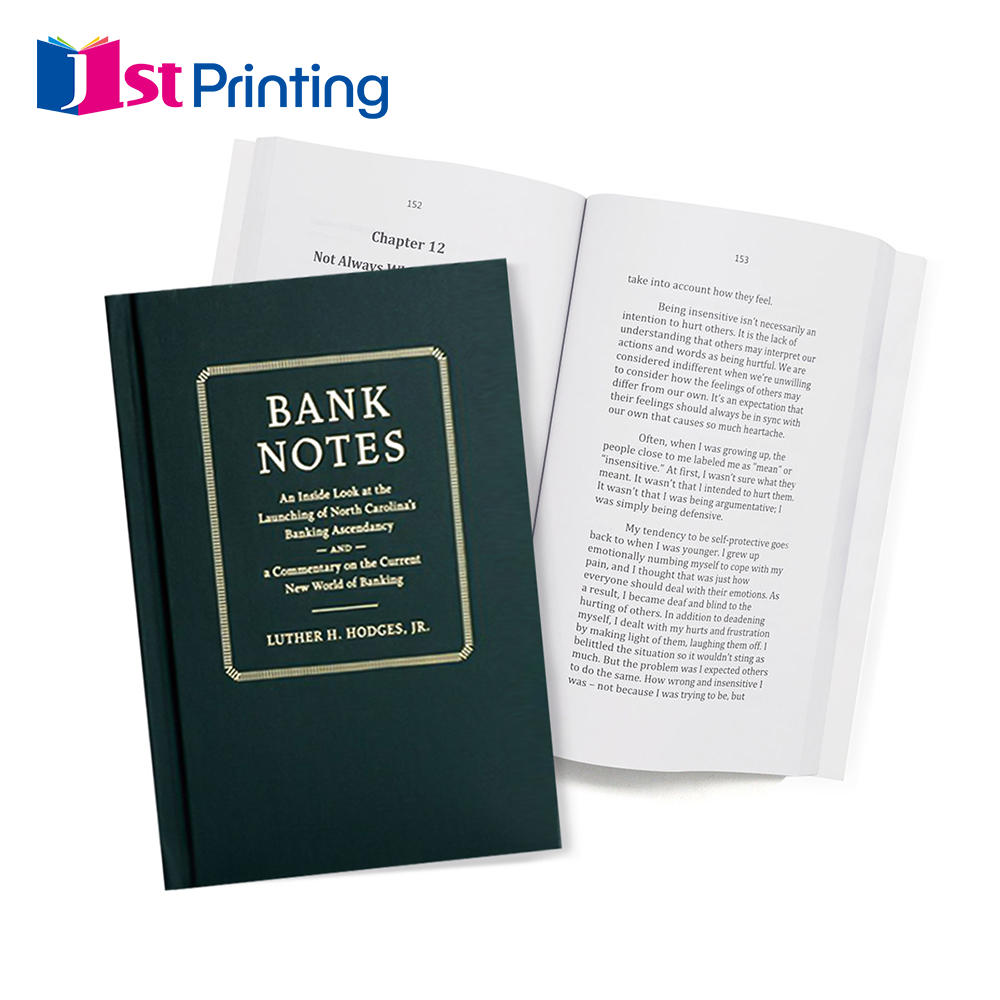Notebook Printing: How to Choose the Right Paper Quality
Understanding Paper Weight for Notebook Durability
GSM Basics: Why Thickness Matters
When it comes to paper weight, grams per square meter (GSM) matters quite a bit for thickness and how long the paper lasts. Simply put, GSM tells us just how heavy and tough a particular sheet actually feels. Take notebooks for example – those with higher GSM numbers tend to be thicker, making them feel more solid when we write in them. People often notice this difference and associate it with better quality overall. Most school notebooks sit around 70 to 90 GSM because they need to balance affordability with basic durability. But if money isn't such a concern, premium notebooks usually go up to 100-120 GSM, giving that nice thick feel many people prefer. Getting familiar with GSM ratings helps make sure our notebooks hold up through all that scribbling without looking worn out after a few weeks. So next time picking out paper, take a moment to check those GSM numbers before deciding what works best for our needs.
Ideal Paper Weights for Student vs Premium Notebooks
For students looking at notebooks, the sweet spot for GSM is usually between 70 and 90 grams per square meter. These notebooks strike a good balance between being durable enough for daily classroom use while still remaining light enough to carry around all day without adding unnecessary bulk to backpacks. When we look at higher end options, they tend to have paper weights ranging from 100 to 120 GSM instead. The thicker paper feels nicer under the hand when writing, gives that satisfying resistance, and doesn't let ink bleed through as much which keeps notes looking clean and organized. Some tests actually found that these heavier papers work really well with different types of pens including fountain pens and gel ink varieties without leaving smudges behind. Getting familiar with how paper weight affects performance makes it easier to pick out the right notebook depending on what someone needs them for, whether taking class notes or preparing reports for work later on.
Balancing Weight with Portability
How heavy the paper feels makes a real difference in what the whole notebook weighs and whether someone can carry it around comfortably, which matters a lot for busy students and working folks who move from place to place all day. Thicker paper does give better writing results but adds extra weight that makes the notebook harder to handle when out and about. Finding the sweet spot between nice thick pages that feel good under the pen and keeping things light enough to toss into a bag becomes pretty important. Most people actually prefer something right in the middle these days because they want their notebooks to last through lots of note taking sessions without breaking apart, yet still be manageable during commutes or meetings. Getting this mix right means manufacturers can create products that work well for different kinds of users, from those who write constantly to others who just need something quick and convenient now and then.
Coated vs Uncoated Paper Comparisons
The difference between coated and uncoated paper really matters when it comes to how we write on them. Coated sheets usually have that shiny look and feel super smooth under our pens. But there's a catch they soak up less ink, so what happens? The ink takes forever to dry. That's why these are great for things like art books or presentation folders where people don't mind waiting a bit before touching their work. On the flip side, uncoated paper drinks up the ink fast. When writing notes during class or taking down ideas at coffee shops, this means no smudges from our fingers getting oily after holding a cup too long. Students love this stuff because it just works better for regular note taking. Looking around lately, more folks seem to be going back to basics with their notebooks. There's something about the rough texture of good quality uncoated stock that feels right for those morning brainstorm sessions or late night study marathons.
Smooth vs Laid Finish for Different Pen Types
When picking out notebook paper, whether it's smooth or has a laid finish really matters for how well different pens work with it. Smooth pages are great for those cheapie gel pens and regular ballpoints since they glide right across without much friction at all. The laid stuff feels rougher to the touch because of those little lines running through it, and most people find this works better with fountain pens. Artists who do calligraphy tend to love these textured surfaces too. They get just enough grip so the ink spreads properly on the page, giving their artwork that extra something special. Bottom line? Match your pen to the right paper texture based on what feels good when you write or draw. Some trial and error might be needed before finding that perfect combination that makes everything flow smoothly.
Spiral Binding Compatibility with Textures
Spiral binding gives notebooks some serious benefits, especially when paired with different paper types. The coils let pages flip through easily and lie completely flat on a desk, something that really matters when working with thicker papers found in high quality notebooks or art journals meant for detailed work. But there are some things to think about regarding texture compatibility. Rougher paper tends to weigh more overall, making the whole notebook bulkier to carry around and potentially stressing the binding over time. Most people who actually use these notebooks day to day seem to gravitate toward spiral bound versions with smoother surfaces. They want something that lasts while still being convenient to handle during regular note taking sessions at school or work meetings.
Customized Notebooks with Recycled Paper Options
More and more businesses concerned about their environmental impact are turning to customized notebooks made from recycled paper stock. Using sustainable materials like recycled paper gives companies two main advantages at once green credentials and brand identity that stands out. When companies choose notebooks on recycled content, they actually help reduce waste without sacrificing style or quality that matches their corporate image. Market research shows this trend isn't just passing fad either. Recent data points to growing demand specifically for custom notebooks crafted from post-consumer waste paper. This reflects what consumers want nowadays products that look good but also come from responsible sources and manufacturing processes.

Boxed Spiral Sets for Professional Use
Spiral Box Sets have been crafted with corporate clients and professionals in mind. What makes them stand out? Durable spiral binding combined with tough hardcover protection gives these notebooks both looks and practicality. Beyond just being built to last, these premium sets offer great branding possibilities too. Companies love adding their own logos and color schemes, which turns these notebooks into excellent gifts for clients or presentation materials during meetings. We've noticed something interesting lately – there's definitely a rising trend in demand for custom notebooks. Sales numbers back this up, showing more and more businesses want quality products that actually reflect their company identity instead of generic alternatives.

Elegant Protective-Case Notebook Collections
Protective cases for notebooks have evolved beyond mere protection into fashion statements that appeal to high-end buyers. The best collections combine practicality with eye-catching design elements that make people want to show off their devices. When someone sees a sleek case with unique patterns or metallic finishes, it naturally raises the perceived worth of whatever device sits inside. Looks really matter when shopping for luxury items. Studies show most folks will pay extra for gadgets wrapped in fancy packaging. This trend makes sense because presentation often counts for just as much as what's inside, particularly among customers who care deeply about style and status symbols.

FSC-Certified vs Post-Consumer Recycled Content
Knowing the difference between FSC certified paper and post-consumer recycled content matters when companies want to make notebooks that are better for the planet. Paper with FSC certification comes from forests where trees get replanted and wildlife habitats stay protected. For instance, forests in Sweden maintain strict standards for sustainable logging practices. Post-consumer recycled content works differently it takes old office paper, pizza boxes, anything people throw away after using once, then turns it back into new paper without needing fresh wood pulp. Both approaches help cut down on waste and support greener manufacturing processes. More shoppers are looking for these eco options now, especially younger generations who check labels before buying. A recent survey found around 7 out of 10 people will actually pay extra for products that carry green certifications. This growing preference shows why manufacturers need to consider both FSC and recycled content options when designing their products.
Chlorine-Free Bleaching Processes
Getting rid of chlorine in the bleaching process makes all the difference when it comes to making paper that's actually good for the planet. Traditional methods often let out dangerous stuff like dioxins, which end up polluting our waterways. The newer chlorine-free approaches instead rely on things like oxygen compounds, which just aren't as bad for fish and other creatures living in our lakes and rivers. Paper companies that switch to these greener methods do more than just help protect nature they also catch the attention of customers who care about what goes into their products. According to reports from environmental watchdogs, switching over cuts down on those nasty toxins getting released into the air and water. As businesses across industries scramble to hit their green targets, adopting these cleaner paper production techniques becomes less of a choice and more of a necessity if they want to keep their customer base happy with their eco credentials.
Durability of Sustainable Paper Stocks
Paper stocks that are sustainably sourced stand up pretty well against regular paper when it comes to how long they last and how they perform. These papers tend to resist tearing better and generally stick around longer, which works great for all sorts of stuff like taking notes in a journal or printing something really nice. Most people find that sustainable papers hold up better than standard options in many cases. They just feel stronger somehow, even though they come from trees grown responsibly. Industry stats back this up too showing sustainable papers can handle rough handling just as good if not better than what we've been using traditionally. For companies trying to go green but still need quality products for customers, these eco friendly alternatives hit the sweet spot between being kind to the planet and delivering solid results.























